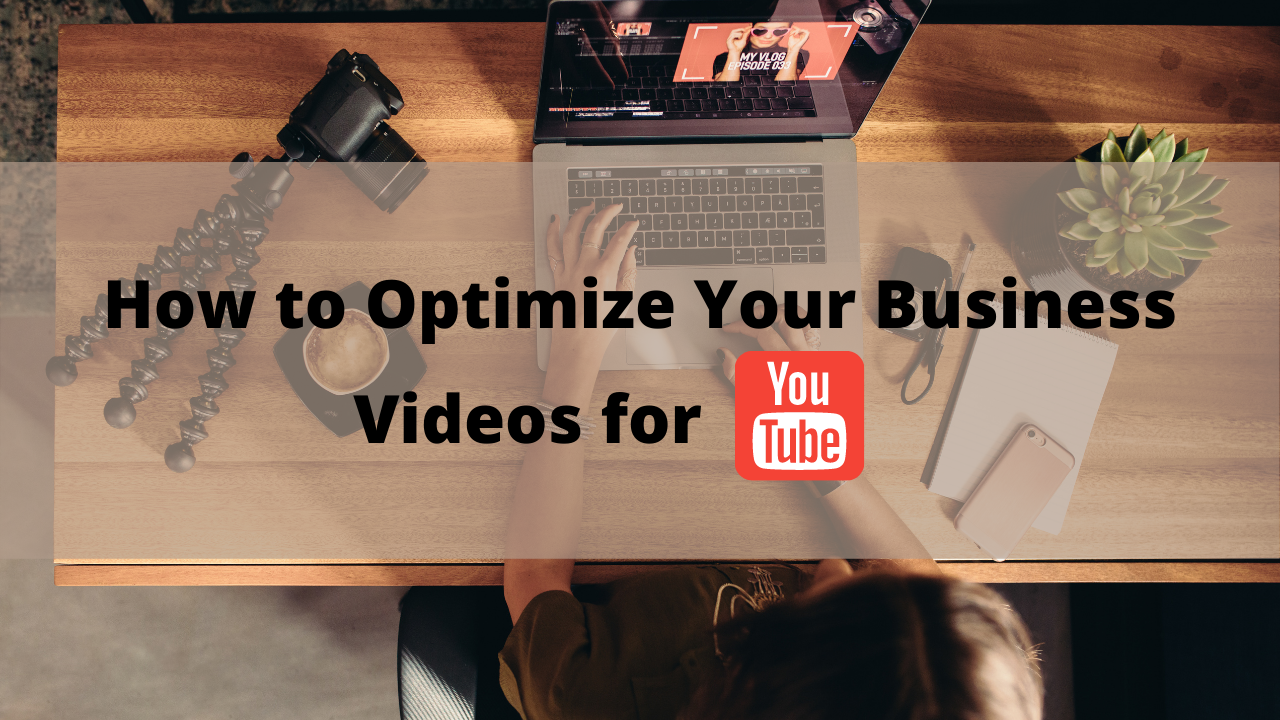Video content is an excellent way to capture the increasingly shorter attention spans of a distracted and busy audience.
But before you spend time or money on creating videos, you need to consider what your long-term goals are. For example, do you want to build more links and garner more social shares, increase conversion rates, boost high-quality traffic to your site, or build up your authority and reputation?
Only after you clarify your intentions can you generate an efficient video search engine optimization (SEO) strategy that will actually help you accomplish your goals and outrank your competition.
In this article, you’ll learn:
- What video SEO is
- Some video SEO best practices
- Where you should host your video content
What is Video SEO?
It’s important to start thinking of YouTube not merely as a video streaming platform but also as a search engine in its own right. As a matter of fact, after Google, YouTube is the most widely used search engine. And even though Google owns YouTube, the search rules, relevant keywords, and search intent will differ – and your optimization strategies should reflect this.
Search intent on YouTube is more instructional than transactional. For example, someone might peruse Google for the perfect headscarf, but they’re going to turn to YouTube to search for ten ways to style that headscarf.
Video SEO on YouTube provides a unique opportunity for perpetual rankings through suggested “watch next” content if you can tap into certain niches.
You can do this by tailoring your strategy to the platform:
Best Practices for a Tight Video SEO Strategy
Choose or Make Attention-Grabbing – But Relevant – Thumbnails
Think of your video thumbnails as a book cover – it needs to be eye-catching and tell people what the book is about at a glance.
People make split-second decisions to click or scroll by based on these video thumbnails. While YouTube will auto-generate these thumbnails for you, you might end up with an irrelevant or less than flattering still.
You’re much better off choosing or creating your own. You can easily do this via YouTube Studio. Simply log in to the app using a g-mail account, then you can choose the video you want to create a thumbnail for and select from three stills or make your own.
Whichever thumbnail you choose, just remember that you want it to be relevant and professional in addition to interest-grabbing.
Elements to include in your thumbnail include:
- Clearly stated topic
- Timestamp for length
- Eye-catching visuals
Create Relevant Title Tags
Don’t mislead your audience. Intentionally mislabeling your video just to garner clicks is a deception that will only hurt your rankings and your reputation in the long run. Once people realize your video isn’t what they were expecting, they’ll click right back to the result pages. Google and YouTube algorithms take notice, resulting in lower rankings.
To create relevant title tags, simply use a keyword research tool, such as Google’s free keyword planner. You’ll be able to find popular search terms and potentially generate new ideas based on this research.
Write Contextual Video Descriptions
A video description is like the meta description on Google SERPs. It needs to be short and sweet and include a few keywords. Google bots crawl these descriptions to determine how to categorize and rank your content based on search intent.
Things to avoid:
- Keyword stuffing
- Luring viewers in with false or misleading descriptions
Things to include:
- A call-to-action
- Links to additional content (e.g. “watch this playlist to learn more about x” or “watch my latest video x”)
Tag Your Videos
Tags are a way to help Google and YouTube catalog your videos so users can find you more easily. Video tags are a vital part of the video SEO trifecta: tags, title, and description.
Tagging is a way to ensure your video appears alongside similar and suggested content. Just as with thumbnails, you can use the YouTube Studio app to tag your videos. Just click on the sidebar menu on the right, select “content”, choose the desired video, and start tagging. You can use the app anywhere and across all device types.
Upload a Video Transcript
You won’t have to work very hard to produce great video transcripts if your recorded material is already well-researched, finely crafted, and includes relevant keywords.
Including a transcript supplies more material for Google to crawl, providing you with more opportunities to rank. Additionally, transcripts expand your reach by making your content more accessible to the hearing impaired.
Transcripts appear below your video in the comments and show up in your video’s closed captions. You can add timestamps to your transcripts to make it easier for viewers to navigate to the exact answers they need, which can greatly reduce bounce rate.
Fine Tune Your Strategy with Research
There are various free tools – and affordable experts when you’d rather someone else do it for you – at your disposal to help you create a video SEO strategy that gets results.
Google, for instance, has a free keyword research tool or planner that allows you to hone in on high-ranking keywords relevant to search intent. The tool will tell you how popular a search term or phrase is, how difficult it would be to rank for these terms and related search terms.
Because you’ll likely pull ideas from pre-existing content, this tool is especially useful in preventing keyword cannibalization, which happens when you have too many of the same or similar keywords across content mediums. This confuses search bots and may lead to pages you didn’t intend to highlight ranking higher than the ones you actually wanted to promote.
Another valuable tool is a site audit, which will review your video or website schema to ensure you have the proper HTML tags that allow Google search bots to crawl and catalog your content.
Lastly, you’ll want to monitor backlinks, as they are a crucial part of any SEO strategy, video, or on-page. Backlinks are similar to citations and are simply links from another website to yours. Backlinks are an indication that people find your content useful and relevant, which further establishes your page’s authority and trustworthiness. Backlink audits check for broken or bad links and links that can help you establish relationships.
Where to Post: Your Website or YouTube?
There are pros and cons to hosting your video on your business website and YouTube:
Hosting Your Video on YouTube:
The pros:
- Already optimized for video
- Second largest search engine
- Suggested video features
- SUBSCRIBE button makes it easier to gain followers
- Built-in thumbnail and transcript tools
- Potential to go viral
The cons:
- Terms and conditions apply
- YouTube can decide to pull your content if it violates subjective decency standards
- Difficult to monetize content for your target audience
Hosting Your Video on Your Business Website
The pros:
- More control over your content
- No need to agree to another platform’s terms and conditions
- You can choose if and how much you’ll charge for your content by setting up a paywall
The cons:
- You might need to pay for more server space, as videos are often large files
- YouTube is massively popular, so you’ll miss out on the platform’s traffic and incidental reach from “suggested next” recommendations
- You won’t be able to take advantage of YouTube’s free editing and SEO elements, such as adding tags, transcripts, and thumbnails
The Bottom Line
Here’s all you really need to know:
- Video SEO is just as important as on-page SEO.
- Your video SEO should be unique and well-researched. It should differ from your on-page optimization strategy. Do not copy and paste!
- Use title tags, descriptions, and transcripts to boost your video’s crawlability.
- Track your progress.
To Save Time and Ensure Success, Hire an Expert
Video optimization isn’t necessarily difficult, but it can be time-consuming and has many moving parts to consider. If you find you’re going cross-eyed trying to optimize for video SEO, reach out to an expert instead. Our SEO professionals can help you supercharge your internet marketing – give SeoTuners a call today at (877) 736-1112 or fill out our online form to tell us more about how we can serve you!








